After Takayama, we headed to Koyasan. To get to our accommodation in Koyasan, it took us 7 hours, 7 trains, a cable car and a bus ride!
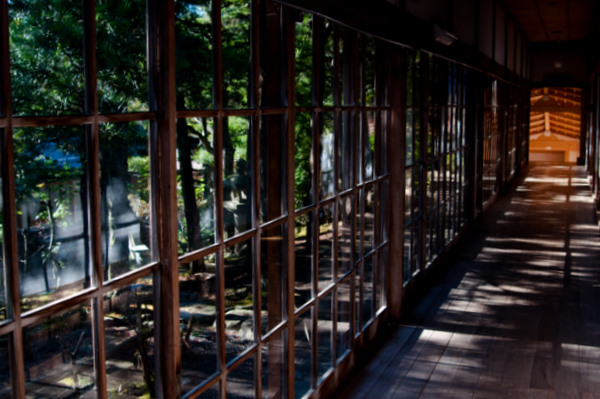
Rengejoin Temple
Koyasan, a small town located on Mount Koya, is the center of Shingon Buddhism in Japan. Shingon is a Buddhist sect which was introduced to Japan in 805 by Kobo Daishi. Kobo Daishi is one of the most significant personalities in Japan's religious history.
Koyasan is located in an 800m high valley amid the eight peaks of Mount Koya (the terrain is said to resemble a lotus plant, which is why the location was selected). With a population of about 4000, the town supports over one hundred temples, but in its glory days, Koyasan is said to have contained over 9,000 temples, shrines, and other buildings, with a monastic population of approximately 90,000. In 2004, UNESCO designated Mt. Koya as a World Heritage Site.
When walking through the small town, you can literally trip over temples. They are everywhere!
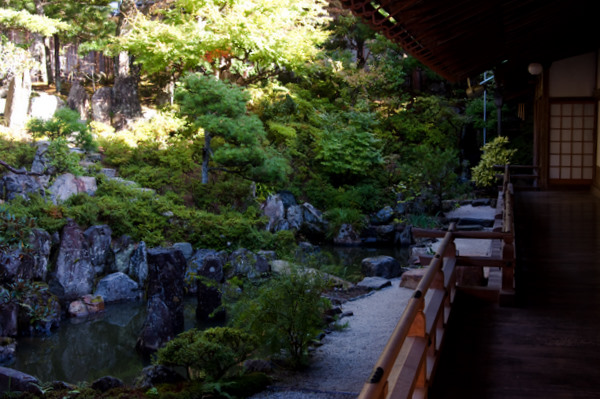
Rengejoin Temple
At Koyasan, we stayed for two nights in a Buddhist monastery, Rengejoin Temple, where we had the opportunity to participate in mediation and morning prayers.
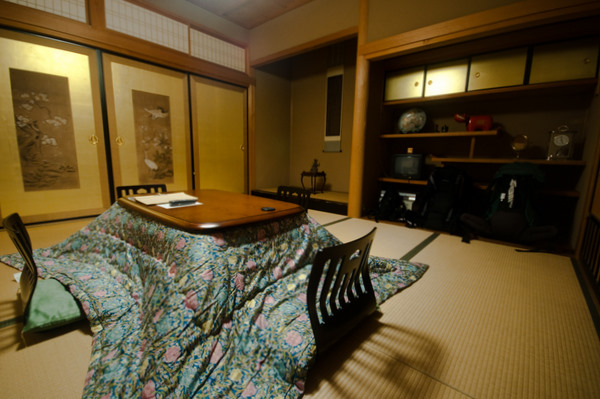
Our room at Rengejoin Temple. There were paper screens between the rooms, so you could hear EVERYTHING.
After arriving at the temple and checking in, we joined the Head Monk for mediation. We had to sit still in a dim, incense filled room for forty minutes. Yes, we struggled!
After mediation it was time for dinner. We headed off to our dining room, where individual tables were set out for us. On offer was shōjin ryori, which is purely vegetarian food that is intended for monks. As well as no meat, no garlic and onions were used in the cooking.
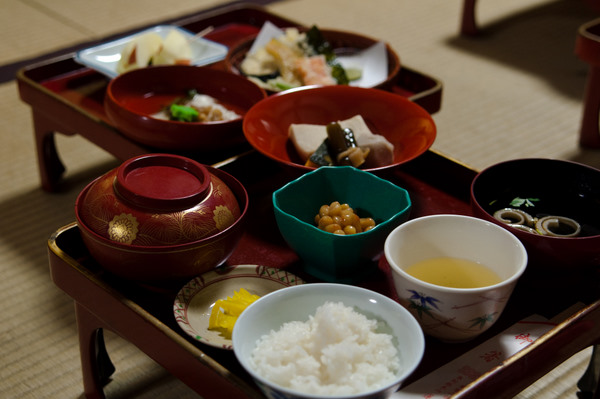
We were served Koya tofu, which is a special preserved tofu that is attributed to the monks in Koyasan (in the middle of the photo above, above the beans). Historically, it was made by monks, who cut tofu into thin slices and put it outside to freeze. Then the tofu was brought back in, thawed and pressed, before being dried in warmed sheds. This preserved the tofu, ensuring that it could last a long time without refrigeration. When rehydrated, the tofu becomes very spongey, soaking up a great amount of liquid. It’s literally like biting into a sponge, with liquid gushing out! In the same bowl as the Koya tofu was seaweed that had been stewed with mushroom broth, soy sauce and sugar.
In addition, there was a small bowl of beans that I found too sweet for my liking, and a bowl of clear soup, inside of which was fu (wheat gluten). Naturally, there was rice, pickles and tea.
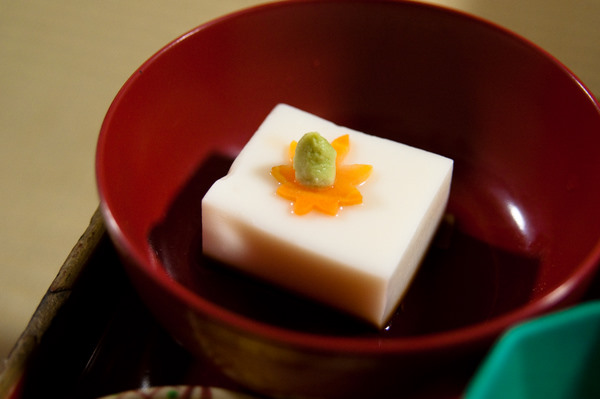
There was also goma tofu / sesame tofu. This is technically not tofu, as it is made out of ground sesame paste, water and a thickener (arrowroot powder). This had a very soft, jelly-like texture, similar to coconut pudding that you get in Chinese restaurants. It was topped with a dab of wasabi and sitting in soy sauce. The goma tofu didn’t have much flavour but it had a wonderful texture and I thought it was delicious.
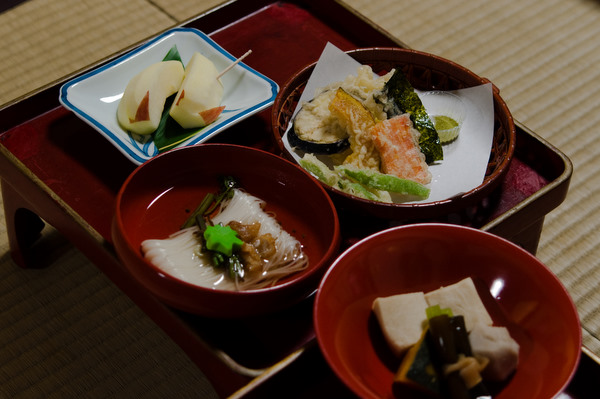
We also had vegetable tempura – beans, carrot, seaweed, eggplant, pumpkin and sweet potato. As well as this, there was a bowl of somen in a mushroom broth. And finally there were a couple of slices of apple for dessert.
(You can see slightly more clearly the preserved tofu mentioned in the previous paragraph at the bottom right of the photo above.)
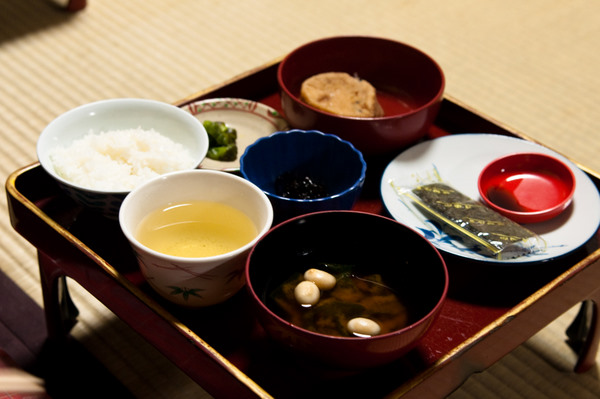
Breakfast was also served. It was just a small breakfast, with seaweed, miso soup with mushrooms and wakame, more Koya tofu, cucumber pickles and rice.
(There was a second dinner and breakfast at the monastery, but the food was very similar to the ones described, so I won’t go into details.)
I enjoyed the meals at Rengejoin Temple. They didn't reach the exquisite gluttony of Takayama, but they were simple and wholesome. It was probably exactly what we needed to detox after the excesses of the previous dinners!
Rengejoin Temple
700Koyasan, Koya-cho,
Ito-gun, Wakayama Prefecture 648-0211,
Japan


